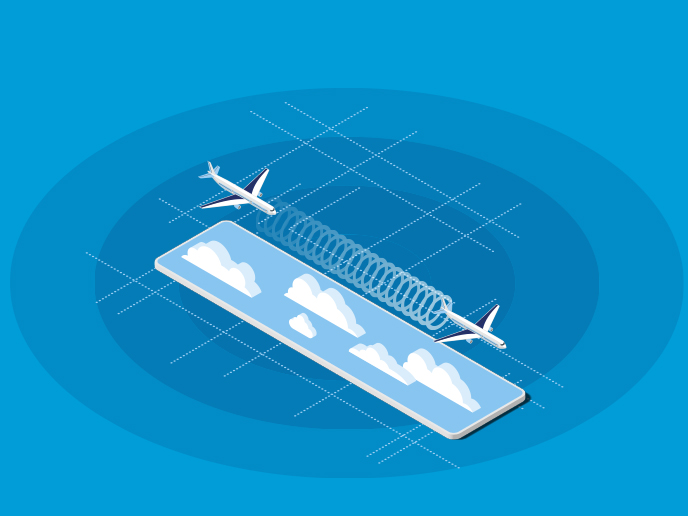II - Chasing the slipstream for more efficient flights
“An updraft is available to be used by a follower aircraft during cruise as a form of additional lift.”
Philippe Masson, GEESE project coordinator
For many years, pilots and air traffic managers have viewed the turbulent wake spun behind aircraft as a risky place to fly, and best avoided. However, these areas of unsettled air also present an opportunity, with a lot of potential energy to be harvested from the vortex. “Since the rotating air is moving upwards on each outboard side, an updraft is available to be used by a follower aircraft during cruise, as a form of additional lift,” explains Philippe Masson, air traffic management and rulemaking at Airbus, and GEESE project coordinator. This practice is known as wake energy retrieval (WER), a relatively new and potentially revolutionary operational procedure for international air transport. WER could significantly reduce fuel use and the associated CO2 emissions. Extensive flight testing by industry bodies such as Airbus has found fuel reductions of more than 10 % available for the following aircraft.
Flying in formation
Airbus has developed experimental technology on board aircraft to put WER into practice, and the GEESE consortium is now analysing how this technology can be brought to operations, and scaled up across Europe. GEESE will define the necessary operational tasks for pilots adopting technology that automatically manages different WER positions, including flight management systems and new WER cockpit functions that capture and track the wake vortex. The GEESE team will also explore a ‘pairing assistance’ system for dispatchers at airline operations control centres. The project, which is funded through the SESAR 3 JU, will run a series of simulations to validate the pairing procedures, involving Air France, French bee, Delta and Virgin airlines. The project will also further investigate wake science, to advance the underlying concepts and consider the impact of formations. This includes defining the wake generated by the second aircraft in a pair, safe positioning behind the pair, and how to ensure the safety of surrounding traffic. “We will propose recommendations to speedily embody this concept into aviation’s standards and regulations, which will help contribute in the short term to achieving aviation emissions reduction targets,” says Masson
Keywords
aviation, SESAR JU, sustainability, carbon neutrality, air traffic management, ATM, Green Deal, environmental impact, Horizon Europe, Digital European Sky, emissions, reduction



